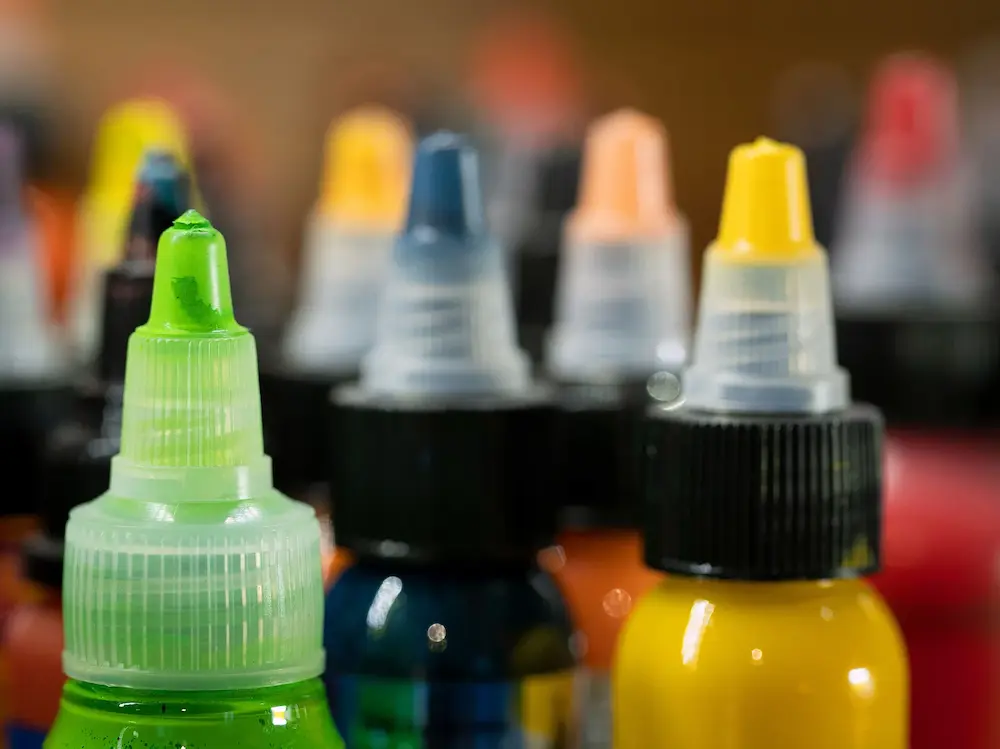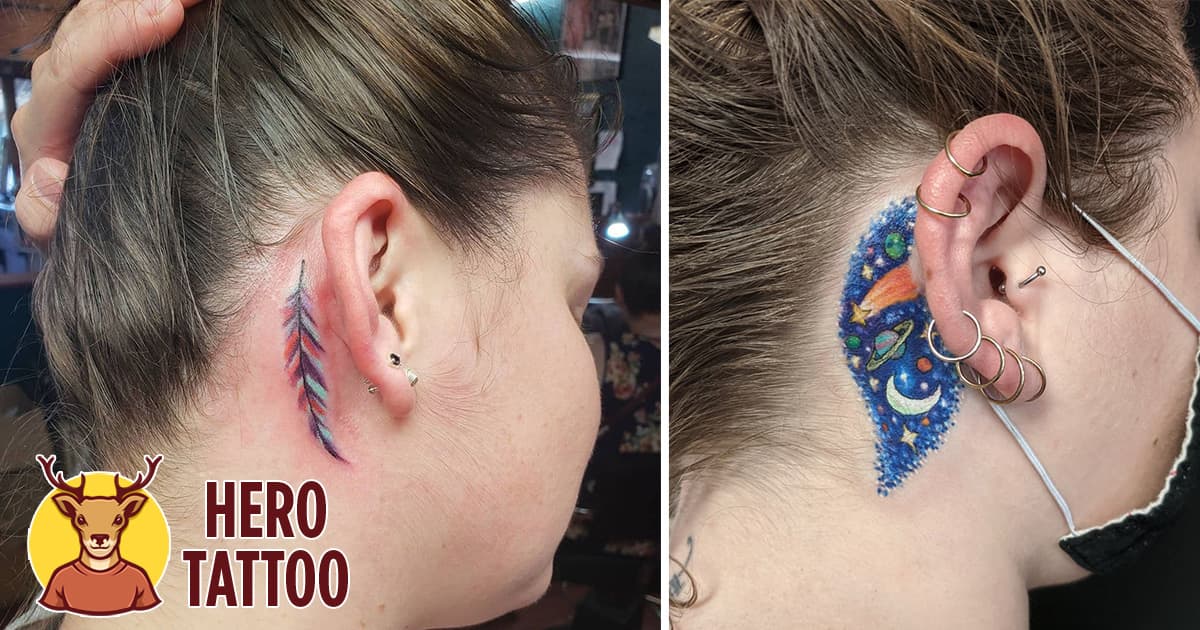When you decide to get a tattoo, the first thing that comes to mind is how amazing it will look on your body. Few individuals, however, consider the potential negative consequences of getting a tattoo before getting one. Some people don’t even bother to check whether they’re allergic to the ink, resulting in serious problems such as tattoo infections. However, there is one issue that many people have: can tattoos really cause liver or kidney damage and illness, or is this a myth? Can tattoos cause liver or kidney damage or disease, or is this a myth?
Several health issues related to tattoos are discussed in the following paragraphs, and getting inked might cause harm to your vital kidneys and liver. So without further ado, let’s get this party started!
Tattoos and the Most Serious Health Concerns
Tattooing Explained in Depth
We all know what getting a tattoo means, but many of us don’t really understand the process. So, let’s start with a simple explanation of what a tattoo artist does to insert the ink beneath your skin and ensure that it remains in place.
Tattoo artists use tattoo machines to actuate needles that inject colorants or ink into the skin. The colorants or the ink are often obtained from reputable internet retailers or wholesalers. When the artist inserts the needle beneath the skin’s surface, the ink is deposited into the skin’s dermis in the form of microscopic particles, creating a permanent mark.
Small amounts of the ink are absorbed by the surrounding tissue, while the remainder is simply absorbed by the blood vessel system. For this reason, ink can be detected in the lymph nodes that are close to the tattooed skin region.
In other words, if you’ve been wondering where all of the health issues come from, here is the answer. Because ink doesn’t stay in one place, the problem comes up when too much ink moves through the bloodstream or accumulates in the tattooed area and the surrounding tissue.
Tattoo Colorants or Ink Explained

Tattoo colorants and inks are often referred to as pigments or dyes. However, the chemical structure of the ink, when employed as a pigment, is often insoluble, which is necessary for the media in which the stain is utilized and included to function correctly. As a result, tattoo artists use the stain to produce durable and long-lasting tattoos.
Organic pigments and inorganic pigments are the two types of pigments available today.
In the past, most tattoo artists utilized inorganic pigments, which included dangerous elements such as chromium, mercury, and cadmium, among other things. Consequently, the stain was not only black but also acquired hues such as red (mercury sulfide) and yellow (yellow) (cadmium sulfide). Black ink also had a mix of carbon black and titanium dioxide, but that was not all.
Organic pigment is the most commonly used type of pigment currently. Organic colorants have a chemical structure composed of organic dyes or polycyclic pigments, for example. These pigments have demonstrated superior color payoff and more vividness or brightness.
It is essential to point out that colorants do not have to meet specific medicinal standards when discussing ink pigments. Because of this, colorants can comprise by-products of the coloring compounds and other impurities in addition to the conventional chemical structure. So the colorants’ whole “component” list is partial, and it differs from one colorant to the next due to this variation. The same difficulty applies to both black colorants and colorful pigments; the solution is the same.
Tattoo Colorants and Potential Health Risks
Polycyclic aromatic hydrocarbons, often known as PAHs, commonly produce colorants and ink, mainly black ink. Furthermore, carbon black is frequently used in the production of black ink, and according to the International Agency for Research on Cancer (IARC), carbon black is classified as potentially carcinogenic to humans. Humans are known to be exposed to these carcinogenic chemicals through the use of cigarettes, polluted air, and through drinking and eating contaminated water and food.
Tattooing is a common way to get carcinogens into the body, but it can also be dangerous if tattoo artists use inorganic pigments or colorants that aren’t safe.
Even when it comes to the carbon black problem alone, it is well-known that it has the potential to induce allergic skin responses and tattoo infections in some individuals. In addition, some people may develop malignancies due to it. However, such occurrences, as recorded in medical literature, may also be accidental in nature.
Tattooing and cosmetic coloring appear to have the most impact on the skin. The tattooing procedure produces significant skin damage, superficial bleeding, and discomfort on the skin. There is also the possibility of tattoo infection throughout the healing phase, evidenced by itching, swelling, leaking, and seeping. Many people also report that their skin is very sensitive and that they have problems with their skin even after their tattoos have healed.
Liver and Kidney Problems Caused by Tattoo Colorants
According to what has been said previously, tattoo colorants or ink do not simply remain in the tattooed region. Instead, a small quantity of ink remains in the tattooed area or the dermis, resulting in a tattoo that is difficult to remove. On the other hand, the extra ink enters the blood vessel system and goes throughout the body.
These ink particles transferred can reach other organs and sites in our body or depart the body entirely through the urinary system or feces. It is at this point that the liver and kidneys enter the picture.
Because the extra ink must be eliminated from the body somehow, it is most likely to pass through the liver and kidneys on its way out. Although the liver is in charge of removing poisons such as excess ink, the chemical structure of the ink may have immunotoxic effects on the body. In the case of the kidneys, the same is true. Brooke Schneller, a doctor of clinical nutrition, says that people who are exposed to heavy metals in defective ink and toxins in colorants can have problems with their kidneys and livers. This can make them feel tired or have problems with their brains.
When this isn’t the case, the ink goes through the liver and kidneys before it leaves the body completely.
However, there is also a more severe matter at hand. If a tattoo becomes infected owing to external contamination of the inked skin, what happens next is as follows: (For example, your tattoo artist is working with a dirty needle). In such a circumstance, the infection has the potential to spread to the kidneys, resulting in severe renal damage.
So what if you have a tattoo on your body?

One of the most important things you can do to avoid the accumulation of colorant poisons and heavy metals in your body is to refrain from getting tattooed in the first place. While it is understandable that this is a difficult decision to make if your immune system is generally compromised and you suffer from certain diseases or allergies, it is preferable to avoid exacerbating your health any more than it currently is.
For those who already have multiple tattoos and wish to get rid of the toxins in their bodies, the following are some suggestions:
- Reduce your alcohol consumption to give your liver and kidneys a rest; alcohol has been shown to cause liver damage and impair liver function in some people.In addition, it helps keep toxins in the liver and get them back into the body.
- Use dandelion to help with detoxification; dandelion effectively removes heavy metals from the body.It stimulates blood circulation and aids in removing hazardous heavy metals from the body that are contained in inorganic inks and colorants.
- Avoid processed foods because they may promote the absorption of toxins and allow them to stay in your system for a longer period of time.Processed foods also weaken your immune system, which makes it easier for pollutants to get into your body and make you sick.
What if you still want a tattoo after all this time?
For those who still intend on getting ink on themselves, we have some guidelines that you may follow to minimize future health difficulties and worries, such as;
- Always choose a professional tattoo artist and be prepared to pay a higher price for their services – this way, you can be confident that the tattoo artists will use high-quality ink, sterile and clean equipment, and other sanitary items.
- Whenever possible, request vegetable-based pigment – this is the sort of organic pigment that achieves coloration via the use of spices (such as turmeric) rather than hazardous heavy metals. Keep in mind that tattoo artists don’t just have these supplies lying around; either they’ll have to custom order them for you, or you’ll have to purchase them yourself before your tattoo session.
- Take good care of your health, particularly your food and water consumption; your body needs to be strong and healthy in order to fight off contaminants.People who eat well and drink enough water may be able to keep their immune systems strong and healthy, which makes it easier for them to deal with the tattooing process and the extra toxins that come with it.
- Inform your tattoo artists of the following: instruct them not to use non – tattooing goods; instruct them not to dilute the ink prior to tattooing; and, if they must cut, instruct them to dilute only with sterile water.In addition, always ask your tattoo artists to clean and disinfect their equipment and keep their hands clean (use disposable gloves).
What’s the bottom line?
Before making any significant life decision, it is critical to conduct a thorough study and balance the advantages and disadvantages. Similarly, tattoos are frowned upon. No matter how much fun they appear to be, tattoos can cause significant health problems in certain people and in specific instances. However, because there is no way to predict how a tattoo or ink will react to your body, it is necessary to prepare in advance of getting one.
It is critical to note that kidney and liver damage are not typical and only occur in a few instances. Being informed of all of the potential adverse effects of tattooing cannot be overstated, though. Simply put, you must think before you write and learn as much about the subject matter as possible.
It is better to give than to receive!






